We use a combination of data analysis, mathematical modeling, and empirical approaches to develop theories and methods for understanding the brain from a network perspective. Our research projects are supported by several national and international funding programs as well as industrial partnerships. We present below some of the most representative projects of the Lab.
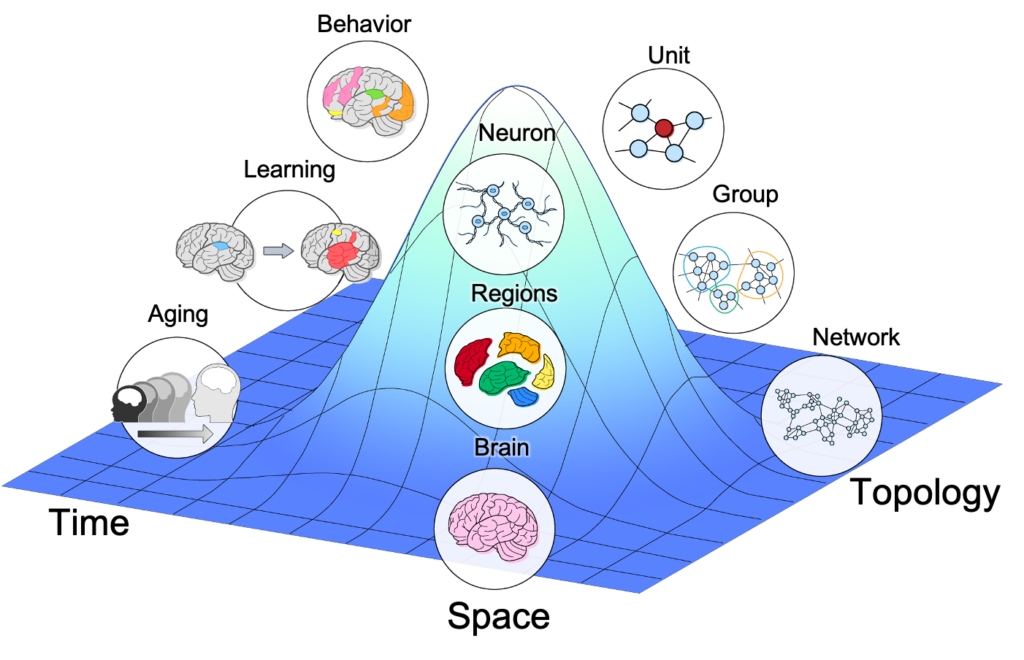
Multiscale network modeling
Brain networks span multiple temporal, spatial and topological levels, underlying healthy and pathological behaviors. How to analyze and model the resulting complex higher-order organization?
- C Presigny, MC Corsi, F De Vico Fallani. Topological duality in complex networks Preprint
- V Dichio, F De Vico Fallani. The exploration-exploitation paradigm for networked biological systems Preprint
- C Obando, C Rosso, J Siegel, M Corbetta, F .De Vico Fallani. Temporal exponential random graph models of longitudinal brain networks after stroke. Journal of Royal Society Interface (2022) Original / Preprint
- Battiston F, Guillon J, Chavez M, Latora V, De Vico Fallani F. Multiplex core-periphery organization of the human connectome. Journal of Royal Society Interface (2018) Original / Preprint
- J Guillon, Y Attal, O Colliot, V La Corte, B Dubois, D Schwartz, M Chavez, F De Vico Fallani. Loss of brain inter-frequency hubs in Alzheimer’s disease. Scientific Reports (2017) Original / Preprint
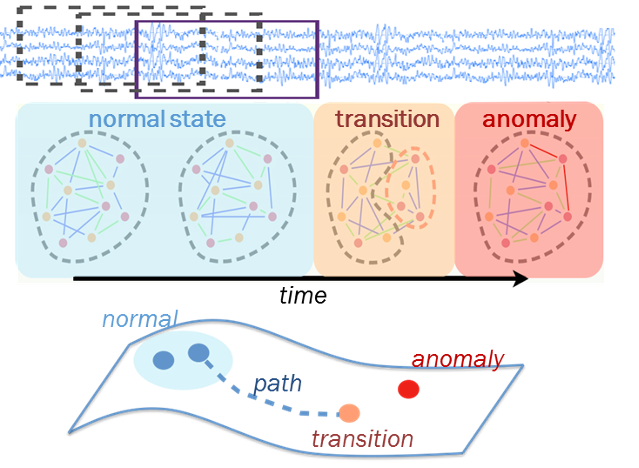
Geometrical network embedding
Brain networks lie in non-Euclidean spaces making it difficult to manipulate and statistically compare them. How to find more suitable representations and detect anomalous state transitions?
- M Guillemaud, L Cousyn, V Navarro, M Chavez. Intracranial EEG connectivity in hyperbolic space as a tool for seizure prediction. Ready to submit
- A Longhena, R Migliaccio, F De Vico Fallani, M Chavez. Embedding in latent hyperbolic spaces to unveil connectivity alterations in brain networks of patients with Alzheimer disease. Ready to submit
- X Navarro-Sune, AL Hudson, F De Vico Fallani, J Martinerie, A Witon, P Pouget, M Raux, T Similowski, M Chavez. Riemannian geometry applied to detection of respiratory states from EEG signals: the basis for a brain-ventilator interface. IEEE Transactions on Biomedical Engineering (2017) Original / Preprint

Multimodal network integration
Brain networks can be experimentally obtained from different neuroimaging techniques. How to properly integrate network information from a machine learning perspective?
- Corsi MC, Chevallier S, De Vico Fallani F, Yger F. Functional Connectivity Ensemble Method to Enhance BCI Performance (FUCONE). IEEE Transactions on Biomedical Engineering (2022) Original / Preprint
- MC Corsi, M Chavez, D Schwartz, N George, L Hugueville, AE Kahn, S Dupont, D Bassett, F De Vico Fallani. BCI learning induces core-periphery reorganization in M/EEG multiplex brain networks. Journal of Neural Engineering (2021) Original / Preprint
- Corsi MC, Chavez M, Schwartz D, Hugueville L, Khambhati A, Bassett DS, De Vico Fallani F. Integrating EEG and MEG signals to improve motor imagery classification in Brain–Computer interface. International Journal of Neural Systems (2018) Original / Preprint
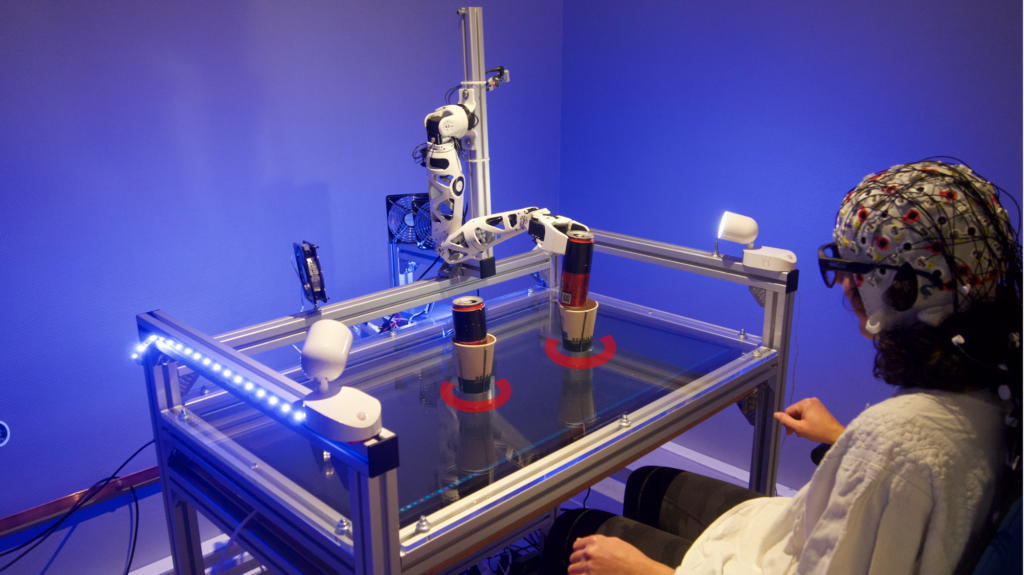
Hybrid BCIs and robotic effectors
Brain-computer interfaces (BCIs) are crucial to understand human-machine coadaptation and unlock clinical applications. How to improve BCI performance and usability?
- T Venot, A Desbois, MC Corsi, L Hugueville, L Saint-Bauzel, F De Vico Fallani. Intentional binding enhances hybrid BCI control. Preprint
- T Venot, A Desbois, MC Corsi, L Hugueville, L Saint-Bauzel, F De Vico Fallani. Towards multimodal BCIs: the impact of peripheral control on motor cortex activity and sense of agency. Ann Int Conf IEEE Eng Med Biol Soc (2021) Original / Preprint
- Chavez M, Grosselin F, Bussalb A, De Vico Fallani F, Navarro-Sune X. Surrogate-Based Artifact Removal From Single-Channel EEG. IEEE Transactions on Neural Systems and Rehabilitation Engineering (2018) Original / Preprint
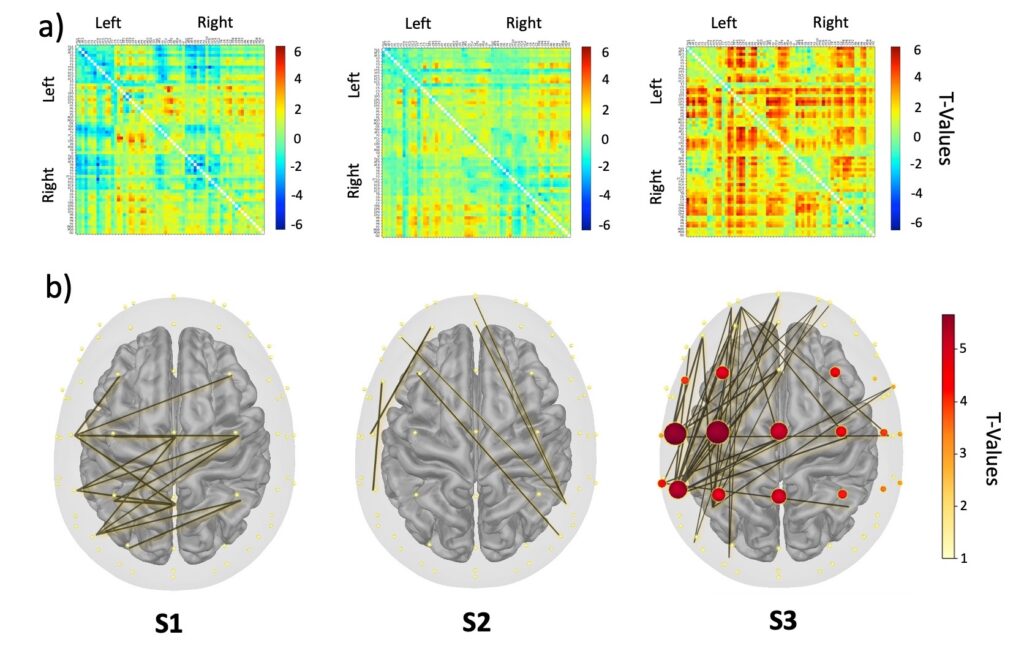
Network-based features for BCIs
Current BCIs neglect the structural and functional interconnected nature of the brain. Can brain network features be used to better decode the user’s mental intention and allow efficient control?
- Cattai T, Colonnese S, Corsi MC, Bassett DS, Scarano G, De Vico Fallani F. Phase/Amplitude Synchronization of Brain Signals During Motor Imagery BCI Tasks. IEEE Transactions on Neural Systems and Rehabilitation Engineering (2022) Original / Preprint
- Cattai T, Scarano G, Corsi MC, Bassett D, De Vico Fallani F, Colonnese S. Improving J-divergence of brain connectivity states by graph laplacian denoising. IEEE Transactions on Signal and Information Processing over Networks (2021) Original / Preprint
- Corsi MC, Chavez M, Schwartz D, George N, Hugueville L, Kahn AE, Dupont S, Bassett DS, De Vico Fallani F. Functional disconnection of associative cortical areas predicts performance during BCI training. Neuroimage (2020) Original / Preprint
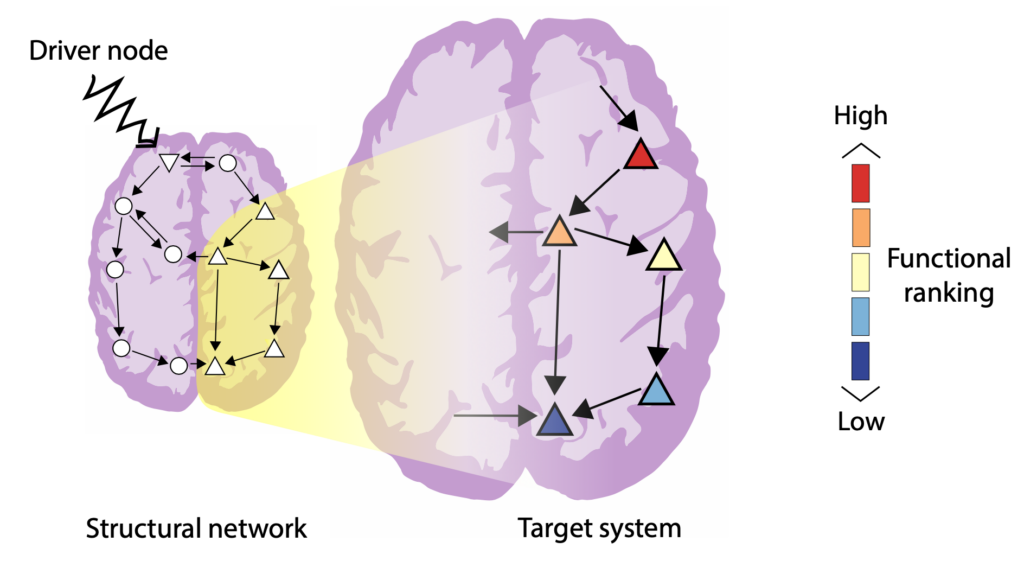
Structural network controllability
To fully comprehend brain functioning we need to be able to understand how to control it. How this can be eventually achieved by only looking at the brain network structure?
- R Ben Messaoud, V Le Du, BC Kaufmann, P Bartolomeo, M Chavez, F De Vico Fallani. Low-dimensional controllability of complex brain networks. Ready to submit
- Bassignana G, Lacidogna G, Bartolomeo P, Colliot O, De Vico Fallani F. The impact of aging on human brain network target controllability. Brain Structure and Function (2022) Original / Preprint
- Bassignana G, Fransson J, Henry V, Colliot O, Zujovic V, De Vico Fallani F. Stepwise target controllability identifies dysregulations of macrophage networks in multiple sclerosis. Network Neuroscience (2021) Original / Preprint





